These winning ideas offer floating solutions to aid Cambodia's Tonlé Sap Lake community
By Bustler Editors|
Thursday, Nov 19, 2015

Related
Earlier this year, UK-based Eleven Magazine launched their inaugural design ideas competition, "Cambodia 2015: Protect Respect Empower". It sought architectural solutions to aid the Floating Village communities of Tonlé Sap Lake in Cambodia, a UNESCO site that is now severely threatened by increasing levels of pollution and disease.
Response to the competition was a success for the first time around, with a total of 243 submissions from 51 countries. Entrants had to create floating designs that provided the local community with medical care, a research hub for the lake, and an educational facility.
The competition concluded with one first-place winner, a runner-up, six honorable mentions, and a People's Choice Winner — wherein the public got to vote online for their favorite entry. Part of the proceeds from this competition will be donated to the Angkor Hospital for Children in Cambodia.
Check out the winning proposals below.
WINNER: "HYBRID{GE}"
Team: Natthapol Pongplanchai, Pratchaya Lertrucksadee, Porncharoen Oranramtmanee, Phanin Chantalert (Thailand)
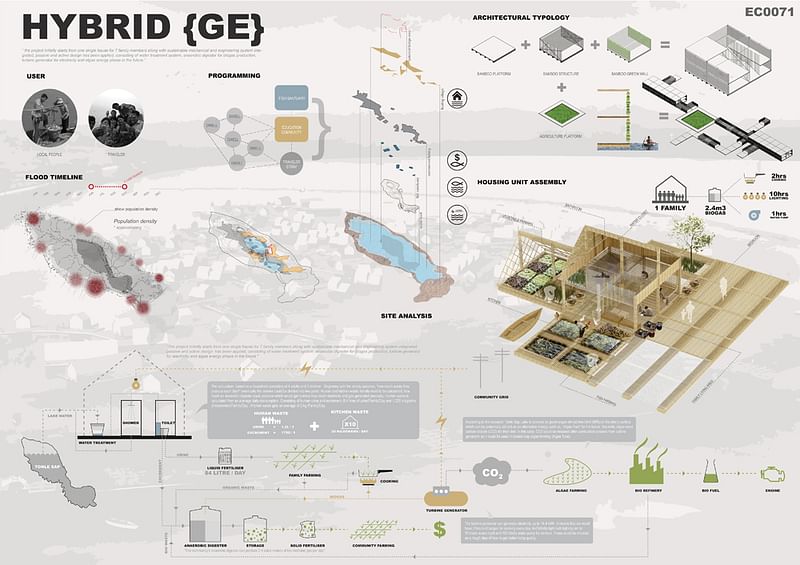
Project description:
"The project initially starts from one single house for 7 family members along with sustainable mechanical and engineering system integrated; passive and active design has been applied, consisting of water treatment system, anaerobic digester for biogas production, turbine generator for electricity and algae energy phase in the future. Including passive architectural design, bamboo has integrated as major material for the whole project which would be floated on the lake’s surface appropriately. Regarding that statement, project itself range from small to urban scale which would help improving people’s qualities of life through this design fabric and also architecturally sustain."
RUNNER UP: Dragoş Georgian Năstase, Dana Ioana Tudor, Ileana Cristina Bălan (Romania)
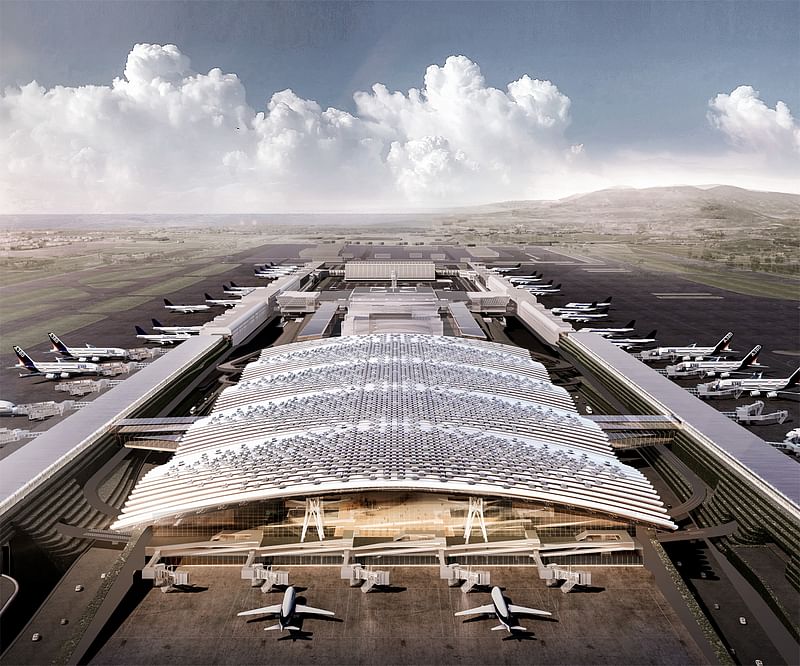
"Our proposal is inherently simple in its concept. We propose a terminal that comprises a hard well defined outer shell, formed to protect, and within it a soft inner surface that is malleable and dynamic to celebrate and form the ever changing spaces below. Adjust both the nature of spaces whether grand, intimate, uniform or dramatic and the extent of those spaces too. This flexibility ensures the airport is always at its best and suitably presented as the principal gateway to and from Taiwan to the rest of the world."
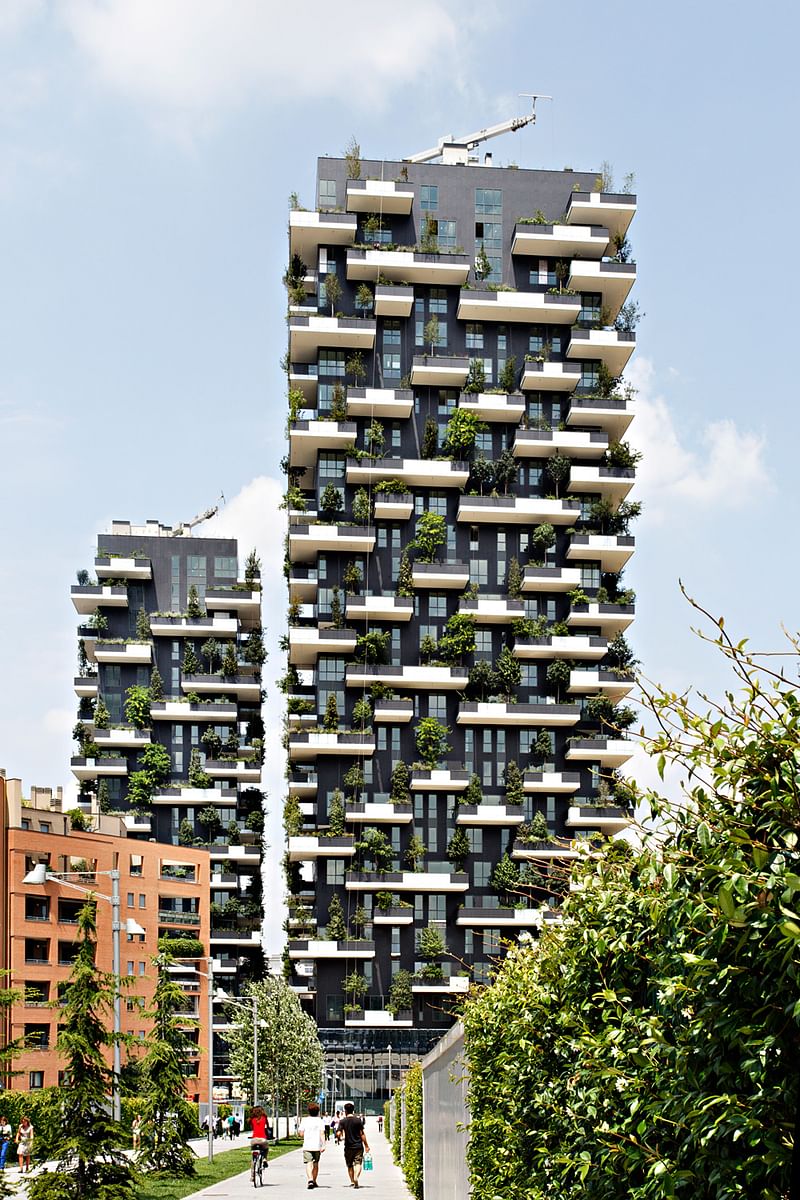
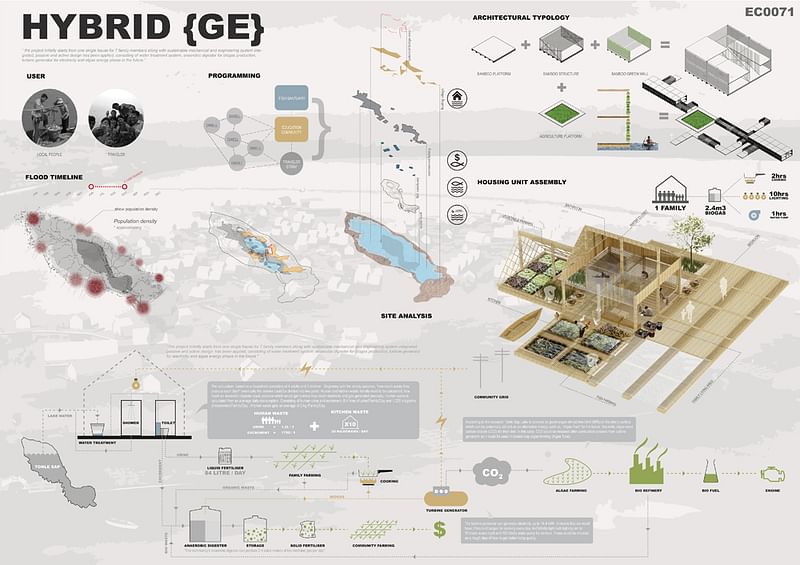
Project description:
"The project initially starts from one single house for 7 family members along with sustainable mechanical and engineering system integrated; passive and active design has been applied, consisting of water treatment system, anaerobic digester for biogas production, turbine generator for electricity and algae energy phase in the future. Including passive architectural design, bamboo has integrated as major material for the whole project which would be floated on the lake’s surface appropriately. Regarding that statement, project itself range from small to urban scale which would help improving people’s qualities of life through this design fabric and also architecturally sustain."
RUNNER UP: Dragoş Georgian Năstase, Dana Ioana Tudor, Ileana Cristina Bălan (Romania)
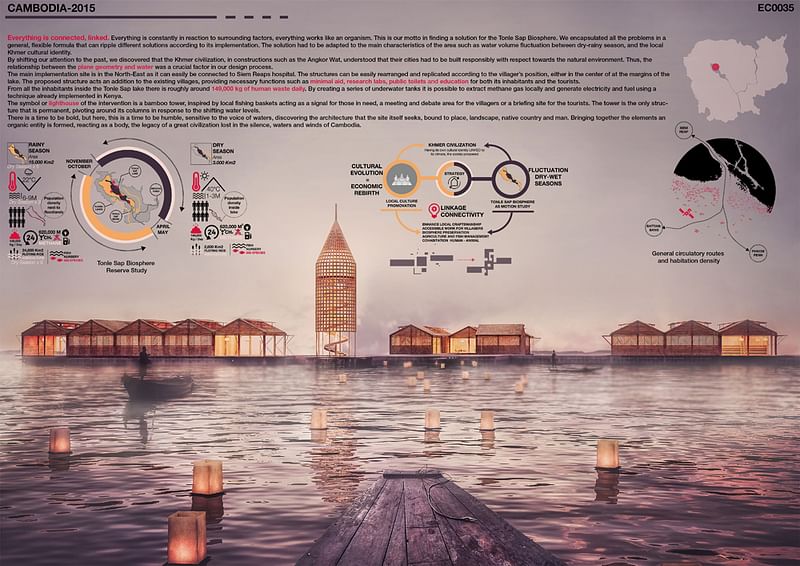
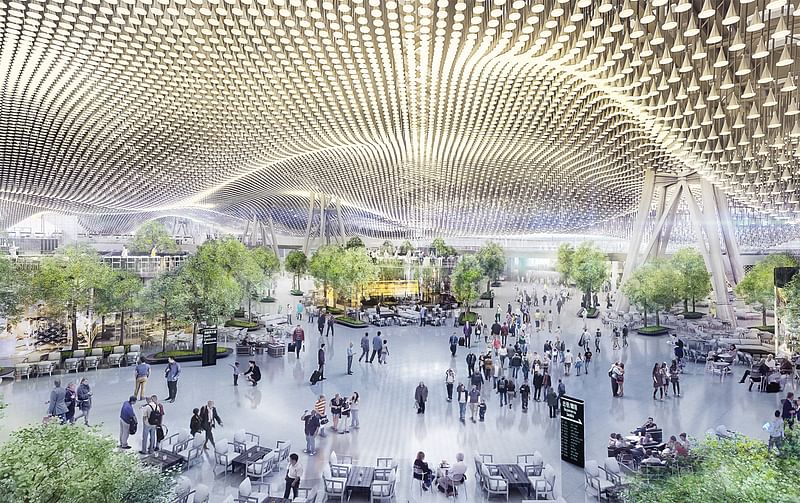
"First of the Next Generation of Airport Terminals:
Our proposal for Taoyuan T3 will be the first of a new generation that will respond directly to the passenger, making the process of using an airport less forbidding. If selected, this unique proposal will become a benchmark for the future, admired and copied around the world.
- Passenger focused
- Unique durable idea
- 'Hard shell, soft core'
- Super clear, quick and easy to use
- Catalyst to improve the whole airport and respect its heritage
- A city address for the MFB"
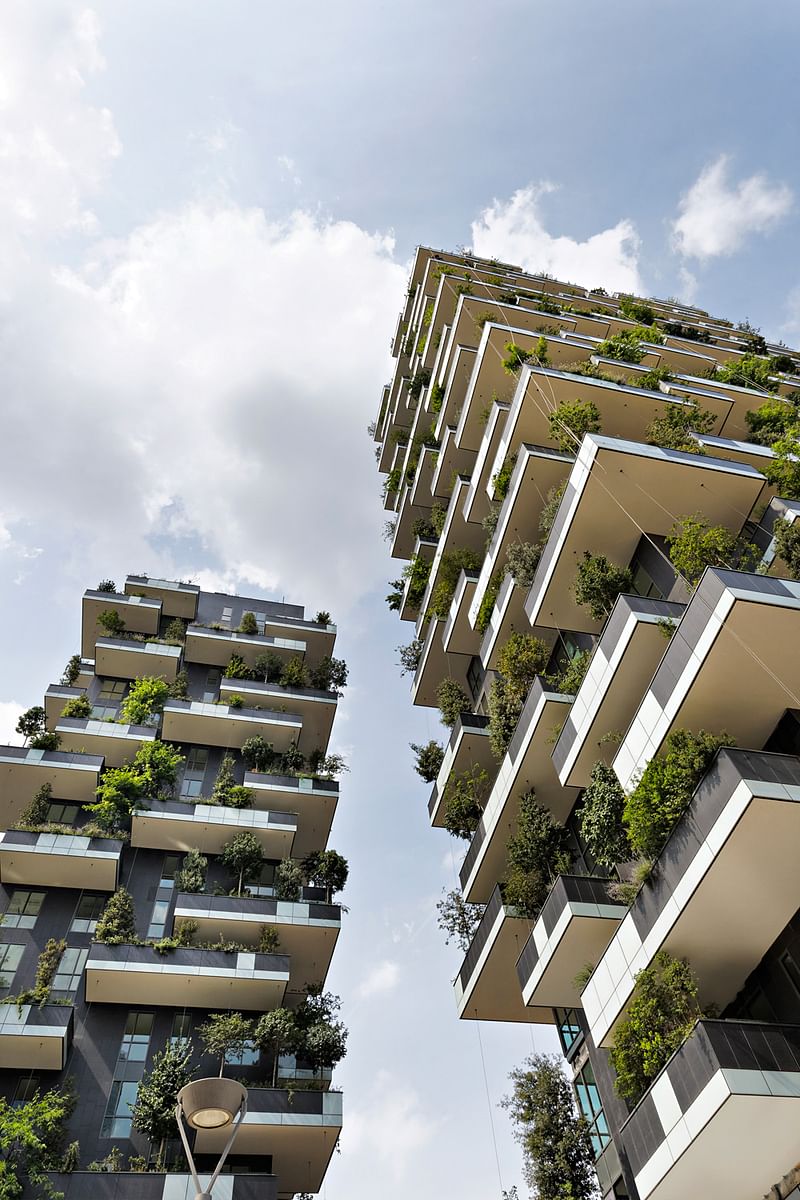
"The building’s intensive 'living façade,' incorporating numerous trees and 90+ species of vegetation, is an active interface to the surrounding environment."
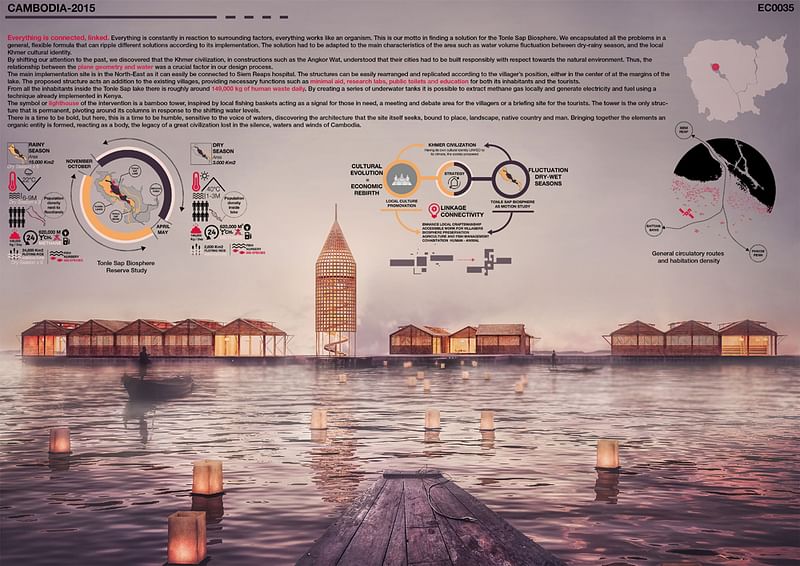

Project description:
"Everything is connected, linked. Everything is constantly in reaction to surrounding factors, everything works like an organism. This is our motto in finding a solution for the Tonle Sap Biosphere. We encapsulated all the problems in a general, flexible formula that can ripple different solutions according to its implementation. The solution had to be adapted to the main characteristics of the area such as water volume fluctuation between dry-rainy season, and the local Khmer cultural identity.
[...]
For the 1.2 million people that are calling Tonle Sap their home, we propose a series of flexible, easy to construct 6x6m, modular bamboo structures that float in concentrated areas around the lake. Having the section inspired by local houses, each structure is linked to another and has the ability to open up creating naturally ventilated spaces, sun shading and additional harbor platforms..."
PEOPLE'S CHOICE WINNER: "Cluster on the Water"
Team: Shenhan Zhu, Jingqiu Zhang (Hong Kong)

"The petals following the line of the hard exterior shell. The petals are designed to respond to the senses, visually and aurally. They are all identical, they are each the height of a person with upstretched arm and arranged on a consistent grid. They each comprise a brightly finished tube and cone which give them depth when seen obliquely and to reflect light from the skylights above. The lower surface of each has a warm reflective finish and is perforated which, with acoustic absorption within, controls sound absorption in the spaces. Each petal is suspended and tied to its neighbours with theatre wire to prevent excessive movement in earthquakes.
During the daytime, when the natural light is sufficient, sunlight is encouraged to penetrate and be refracted by the petals. The petals can be artificially lit from above with daylight balanced circadian lighting. Each petal has a small LED fitting, which can be controlled to highlight its warm underside. We imagine these could be programmed for many functions from forming large pixelated images, to adding colour for festivals and even to respond to the flow of passengers moving through the spaces below."
SECOND PRIZE: UNStudio + April Yang Design Studio Limited + MAA Group Consulting Engineers
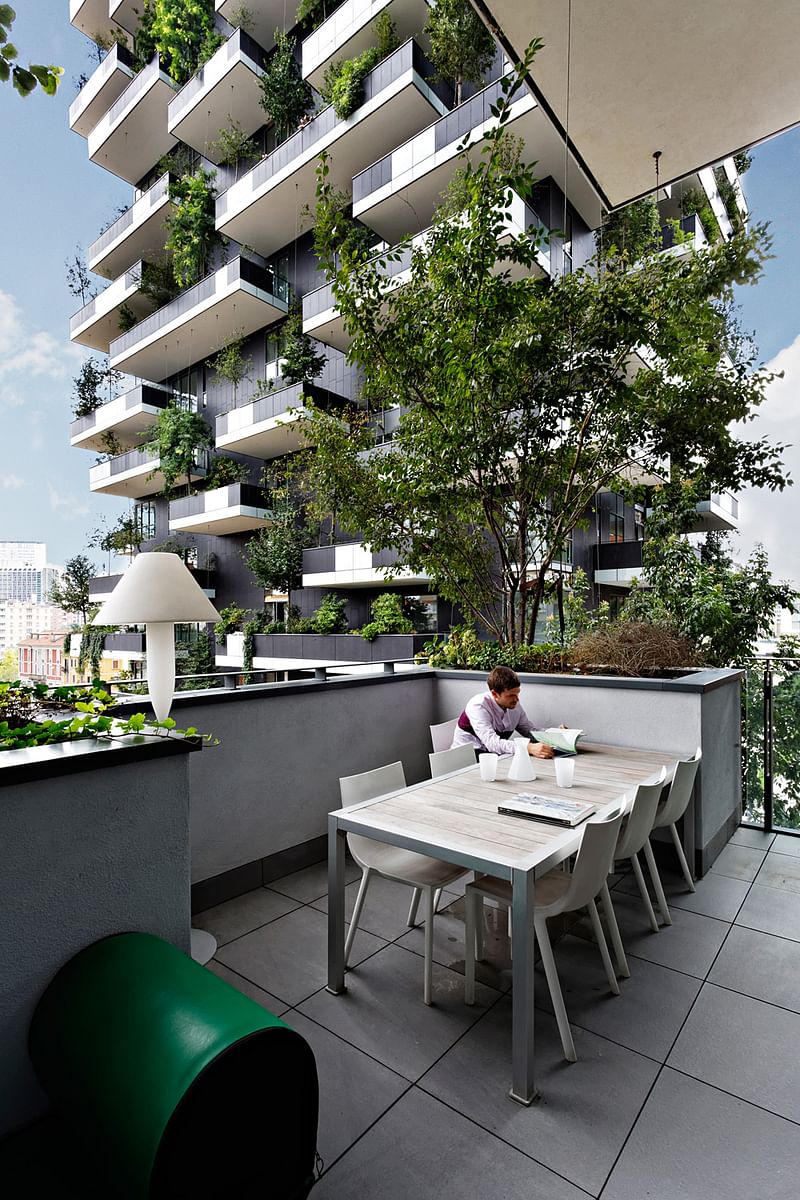
"Along with creating a beautiful appearance, the living green façade concurrently stimulates interaction with the surrounding environment while also protecting against it, in fact enhancing the sustainability of the project. The jury called this exploration of the viability of greenery at such heights groundbreaking."

Project description:
"Everything is connected, linked. Everything is constantly in reaction to surrounding factors, everything works like an organism. This is our motto in finding a solution for the Tonle Sap Biosphere. We encapsulated all the problems in a general, flexible formula that can ripple different solutions according to its implementation. The solution had to be adapted to the main characteristics of the area such as water volume fluctuation between dry-rainy season, and the local Khmer cultural identity.
[...]
For the 1.2 million people that are calling Tonle Sap their home, we propose a series of flexible, easy to construct 6x6m, modular bamboo structures that float in concentrated areas around the lake. Having the section inspired by local houses, each structure is linked to another and has the ability to open up creating naturally ventilated spaces, sun shading and additional harbor platforms..."
PEOPLE'S CHOICE WINNER: "Cluster on the Water"
Team: Shenhan Zhu, Jingqiu Zhang (Hong Kong)
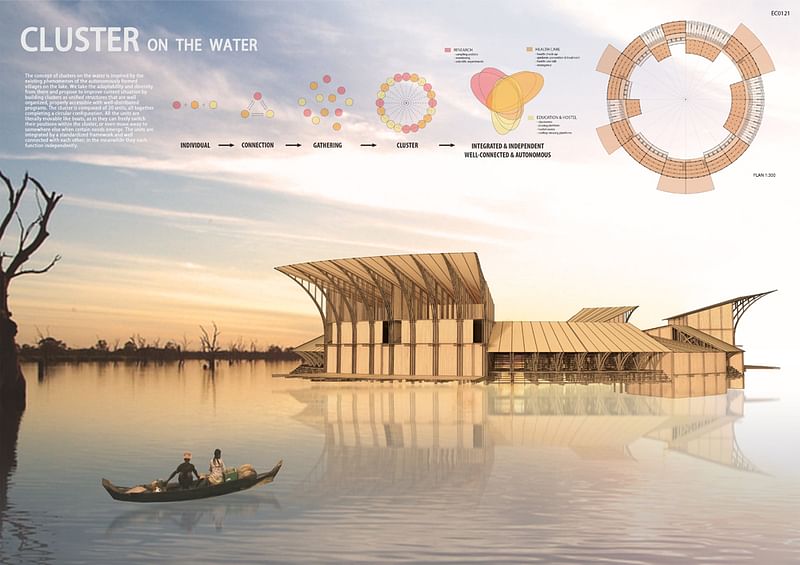
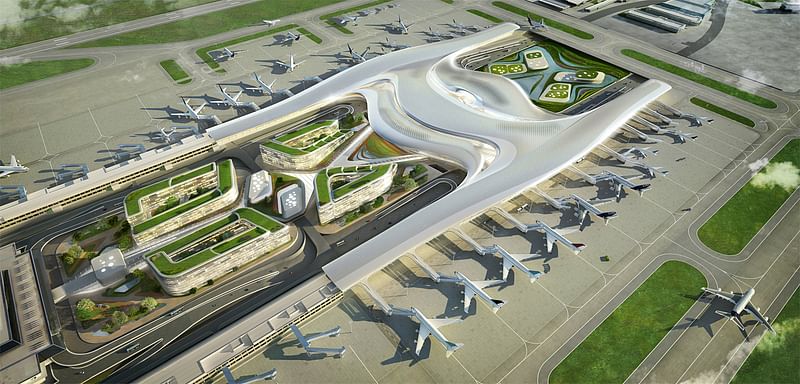
"Place making at urban scale: The new Terminal 3 for Taoyuan airport is the new gateway for the Aerotropolis. With strong connections to Taipei through the MRT and vehicular traffic, the new Terminal 3 fosters strong connections to the new development area. Creating a closer proximity of terminal 3 to terminal 2 gives significant advantages when considering the terminals of Taoyuan Airport as an operational “hub” rather than segregated terminals. The main entrance of terminal 3 will become the most visually prominent facade for the Taoyuan Airport. As one arrives to T3, the roof transitions in a smoothly up-lifting opening up gesture designed to guide people at the curbside to the various entrances. This welcoming gesture is reinforced by the high level of transparency of the glass facades, enhancing the fluid connection between public spaces inside and out. Externally, the canopy reaches over the roadways to provide protection. The experience of the journey starts outside the terminal building!"

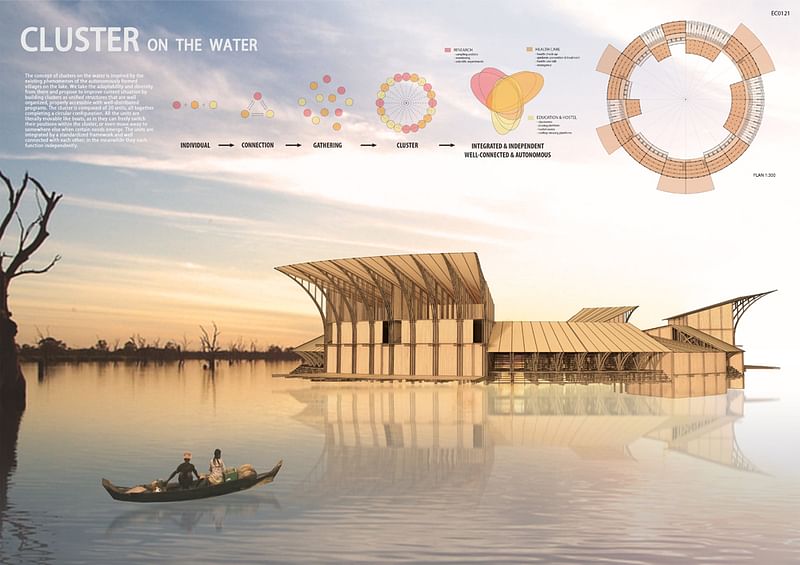
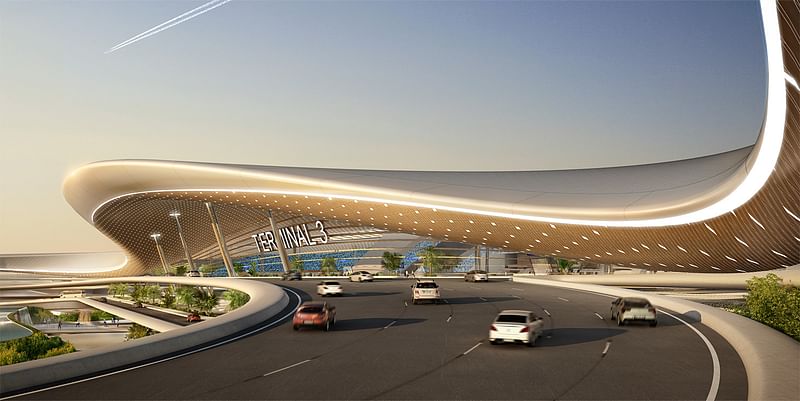
"Place making at building scale: In Terminal 3 we are building an environment: to create an architecture that is responsive to all environmental constraints, creating localised micro-climatic zones internally, and an outer and inner shell that work in concert with one another to ensure the optimum performance of all spaces. The building design is of integral nature. It benefits from a clear organization that provides passengers with high efficiency, while satisfying the need for physical convenience and comforts. The terminal building is characterized by short walking distances, minimal level changes and natural way-find ing through refined execution of orientation and daylight principles.
At the large scale, the architecture itself forms guiding elements – expressed prominently in the vertical structure connecting the MRT with arrival and departure levels, and the visual voids between departure and arrival levels. These important experiential moments and the building as a whole, is based on a rational and efficient grid system (9m base grid) that further differentiates the larger zones. Furthermore, prefabrication off site and assembly on site, efficient use of construction material and building load, all contribute to an effective implementation of the overall design strategy."
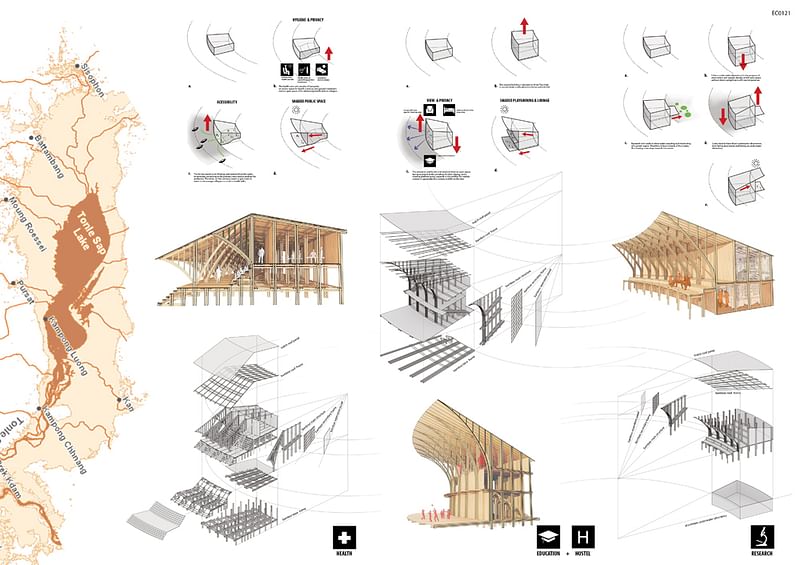
Project description:
"Derived from the fact that activities in floating villages on Tonle Sap Lake are extremely unstable and uncertain, which overlap and mutate all the time according to the drastic environmental changing throughout a year, our design is primarily targeted to be locally based. The cluster is built by bamboo, using traditional local construction method, in a way encouraging the development of local industrial chain and providing job opportunities for labor.
The concept of clusters on the water is inspired by the existing phenomenon of the autonomously formed villages on the lake. Villages are highly adaptable to environmental changes and makes life a lot easier, for different programs come together to facilitate daily demands. However, they are mostly in poor condition due to lack of appropriate management and necessary programs. Therefore, we take the adaptability and diversity from there and propose to improve current situation by building clusters as unified structures that are well organized, properly accessible with well-distributed programs to fulfill demands listed in the brief: health care, research and education..."
Jury:
- Andrew Maynard (Andrew Maynard Architects)
- Arthur Andersson (Andersson-Wise Architects)
- Camillo Boano (DPU, The Bartlett UCL)
- Christine Murray (Editor in Chief of the Architecture Review)
- Dr. Elena Douvlou (Athens Metropolitan College)
- Ingrid Bille (BilleBeyeScheid); Massimo Forese (+39 Architects)
- Dr. Mathilde Marengo (IAAC)
- Perry Hooper (Grimshaw Architects)
- Shaun O’Rourke (BAC / The Trust for Public Land)
- Tom Kundig (Olson-Kundig Architects)
- Dr. Andrea Verenini (Editor in Chief of Eleven Magazine)
Browse through the gallery below to see the Honorable Mentions. You can find more info about each of the HM entries here.

"Place making at interior scale: Our vision is to create an extended experience for the various users. The design speaks of ‘place making’ through the creation of a sequence of spaces that privilege comfort, ease of use and orientation. The cumulative effect of this is a pleasant environment that communicates our best wishes to the visitors. Natural wayfinding is an overarching principle for the internal organization of the spaces, supported by traditional way finding at key-locations. The different micro-climates are defined by physical conditions related to daylight, humidity, temperature and airflow corresponding to the predominant use of such zones. Localized uses are interchangeable and can include retail, recreation, relaxation, food & beverage, play and work; whereas the plants, media, art and Taiwanese culture constitute the integral components of these different zones. It is through this attentiveness across all scales that the project achieves a holistic design approach. The strategy of placemaking achieves the dual effect of appealing foremost to the end users - the people, and consequentially - to the various stakeholders in and around the airport business."

Our team has deliberately chosen to take the ‘unknown’ path. From the project inception, we have sought to conflate the spatial and functi onal experience of passengers. We have looked for an organizational model generated by principles of natural way-finding; creating an interior ecology that is entirely distinct from the look and feel of comparable airports. Through careful analysis of suc precedents, our design approach has sought to build upon and improve the organizational models of airport efficiency. Through this process, we have come to understand that the design for Terminal 3 is not just a building, but a project latent with potential for considering the Taoyuan airport as a hub. This attitude encompasses a desire to see all systems well integrated and aligned with each other, which will in turn allow the design for T3 to be perceived with increased significance - as it will be understood as a catalyst for the transformation of Taoyuan Airport."
THIRD PRIZE: Foster + Partners and Ricky Liu & Associates Architects+Planners
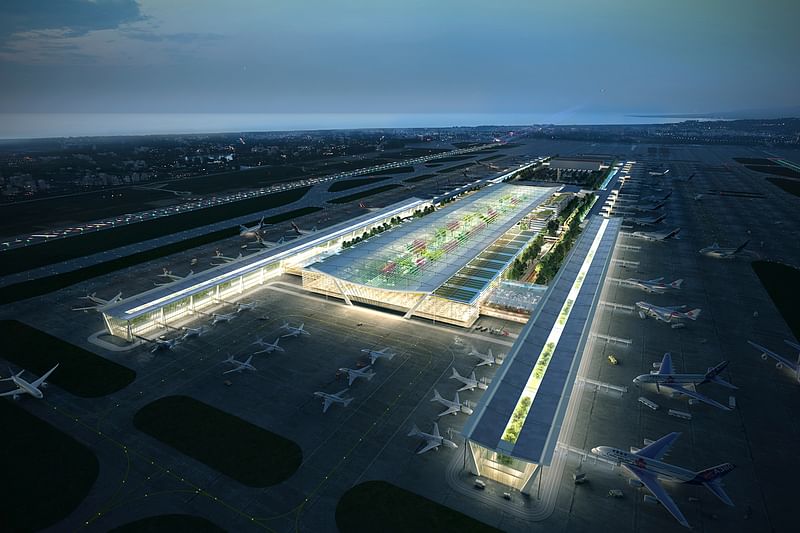
"Taiwan’s rich history and culture, and unique climatic conditions have all influenced the design of the terminal and the airport city. The awe inspiring and undulating backdrop of the Zhongyang Mountains, the majestic flight of the Taiwanese magpie together with traditional Taiwanese architectural forms all have inspired us for the iconic and distinctive sweeping wing roof form that will become a recognisable symbol and icon for the international gateway of Taiwan."
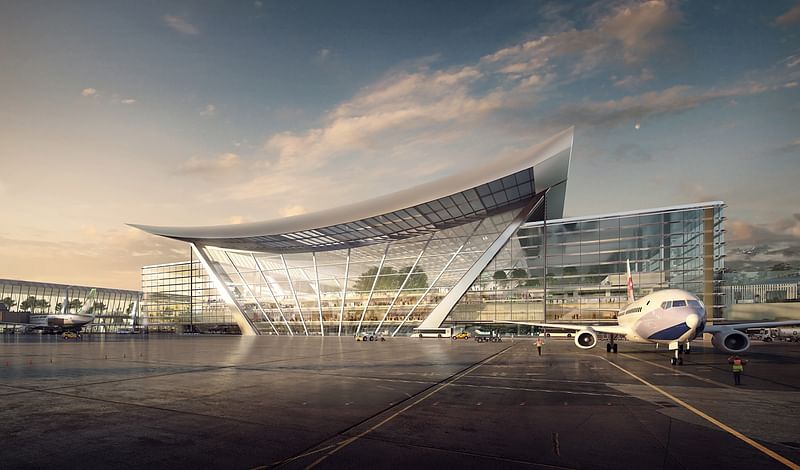
"The rich landscape of Taiwan with its magnificent central mountain range, diverse flora and fauna are celebrated in our concept design. A lush green garden spine is incorporated throughout with abundant indigenous plant species showcasing the variety of Taiwanese plantlife. This garden spine, arranged along the central axis intuitively guides passengers through check-in, security, immigration and departures."

"It also creates unique, calm and relaxing spaces, the lush vegetation providing a welcome contrast to the harder finishes in the terminal. This reduces anxiety and stress normally associated with air travel, allowing passengers and visitors to connect with more natural and familiar surroundings. The choice of planting will represent the various places throughout Taiwan, informing and educating visitors the beautiful range of the indigenous landscape. The green garden spine will cover over 30,000sqm making it the greenest and the most exceptional airport in the world."

All images courtesy of Taiwan Taoyuan International Airport - Terminal 3 Design Competition.
See more images of each proposal in the thumbnail gallery below.
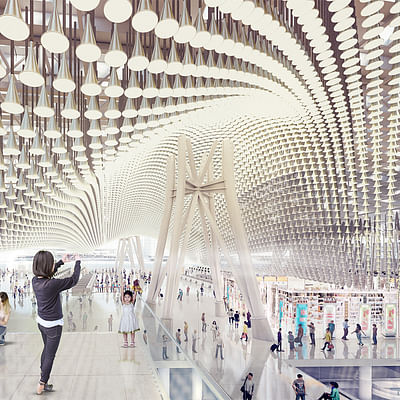





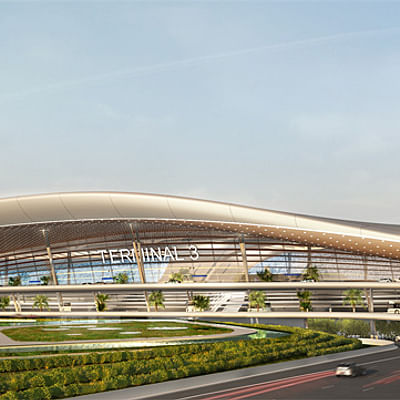
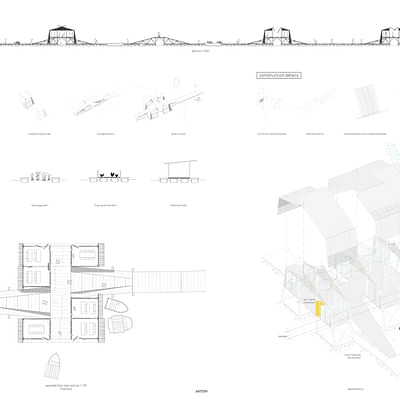

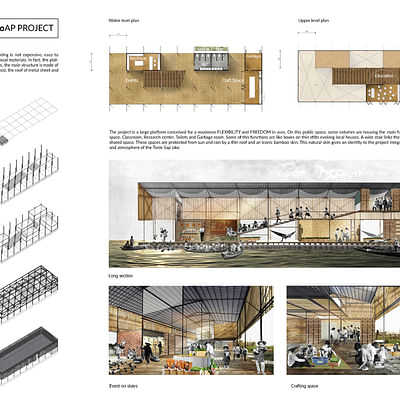
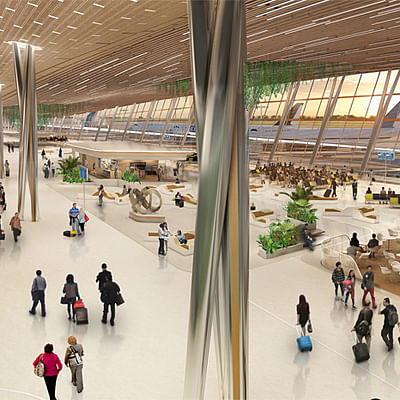
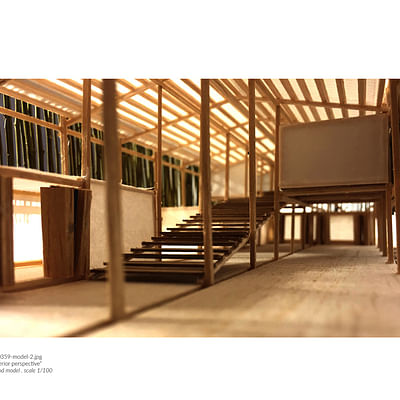

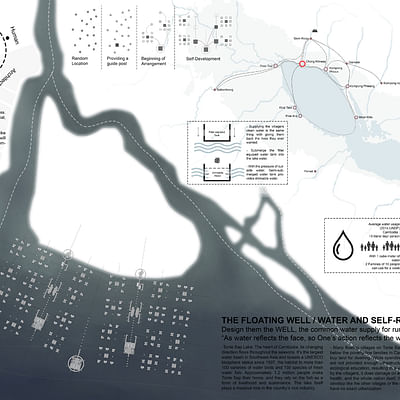
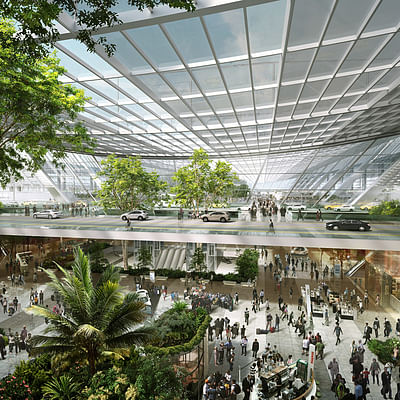
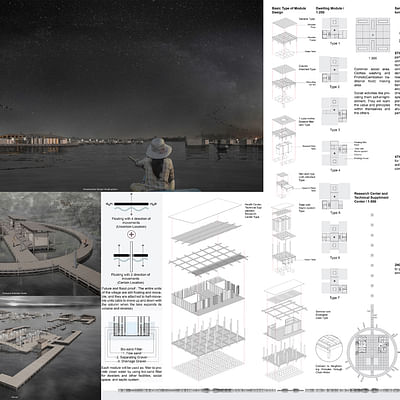
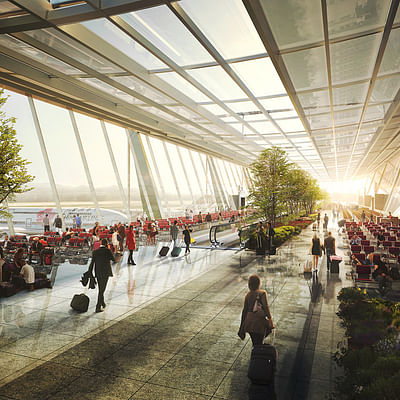

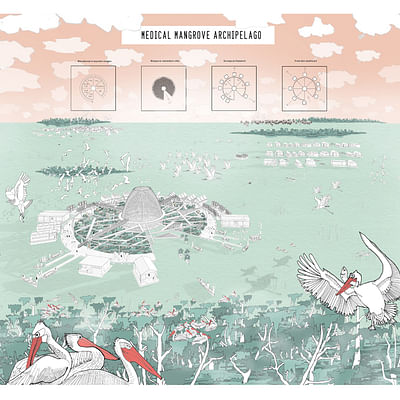

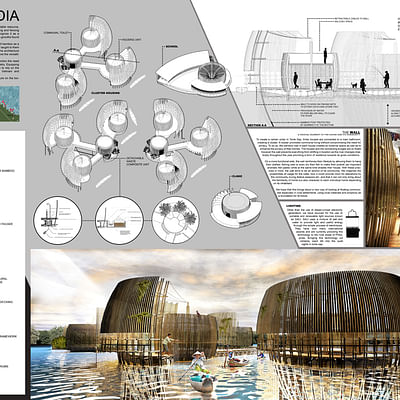


Share
0 Comments
Comment as :